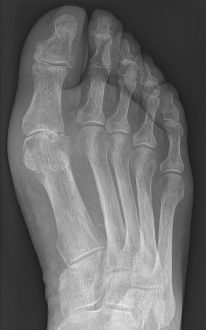Hyperuricemia is often related to gout. It is a rheumatic disorder that is usually caused when the monosodium urate crystals are excessively deposited in the body. But the development of saturnine gout, on the other hand, is due to the toxicity of lead.
There has been a clear relation established between lead toxicity and gout in various clinical studies. The renal function is altered, when there is increased exposure to the lead. It can be through excessive oxygen radicals or tubulointerstitial fibrosis.
Uric acid and lead have a direct correlation when it comes to this rheumatic disorder. Mostly its prevalence is high in asymptomatic patients which are highly exposed to lead. Lead intoxication can also be the reason for hyperuricemia. This might lead to saturnine gout or hypertension.
This article will help you understand the concepts of saturnine gout and how it can be treated. Let’s move forward!
Saturnine Gout Mechanism
The origin of the word Saturnine is from Saturnus, which is a term used in alchemy that means lead. The reason to give this name was that the temperature of lead was cold like Saturn(planet). The tubular reabsorption is increased, when there are defects in the proximal tube, leading to a high level of uric acid lab value.
There is a high ratio of development of Saturnine gout in the workers who work with lead as compared to other people. The serum uric acid levels are gradually high in these patients. Let’s discuss the mechanism.
One of the waste products of blood is uric acid. Sometimes when the levels are increased to an alarming level, it is excreted through urine naturally. But in most cases, it develops into hyperuricemia. Hyperuricemia aids in the development of crystals of urate, which might deposit in the joints leading to painful gouty attacks. In a few cases, lead exposure or toxicity is the main reason behind causing hyperuricemia.
Saturnine Gout Symptoms
Saturnine gout can affect any joint in your body. But mostly lower extremity joints are affected the most. This includes knees, ankles, and toes. The symptoms of Saturnine gout are almost the same as other types of gout. The symptoms may include:
- Hot and tender feelings in joints
- The area surrounding the affected joint is swollen
- Excruciating pain in joints
- Inflamed or shiny skin around the affected area
- The range of motion is limited when the disease progresses
The symptoms might trigger at night because most of the time it is asymptomatic. These gout attacks are considered acute by healthcare professionals. Usually, the symptoms take 5 to 7 days to settle down but it can take longer than this period.
Saturnine gout symptoms develop rapidly and they aggrandize within 12 to 48 hours. Even the slightest contact with the joint is extremely painful.
Saturnine Gout Causes
Although the main cause of saturnine gout is lead toxicity. Increased exposure to lead can cause high levels of uric acid. However, there are some other factors that might become the reason for developing gout. These include:
- The urate excretion is impaired with chronic kidney disease
- The reduction in urate excretion caused by lead toxicity
- Urate excretion is reduced with the use of specific medications like low-dose aspirin, cyclosporine, and diuretics
- Excessive alcohol consumption can increase the production of urate and decreases its excretion
- Increased cellular turnover can lead to psoriasis, a skin condition. This leads to hyperuricemia and breakdown of nucleoproteins
- Lymphomas can be another leading cause
- Myocardial infarction
- Cerebrovascular accidents
Saturnine Gout Treatment
There are numerous options to treat gout. Lifestyle modifications, dietary restrictions can also help in the management of this rheumatic disorder. The management of critical cases like saturnine gout can be treated with the following medications.
Colchicine Prophylaxis
The gout attacks are prevented at the dose of 0.6 mg QD or bid. The level of uric acid remains unchanged. The common side effect includes diarrhea. If the patient is unable to tolerate the dose b.i.d, it is reduced to once a day. This therapy is recommended for 6 months.
Uricosurics
This drug class includes probenecid. It is recommended for those patients who don’t have an underlying kidney-related disorder. It is relatively safe and is an excellent option for people who experience recurrent attacks of gout.
Allopurinol And Febuxostat
The production of uric acid is decreased with xanthine oxidase inhibitors. Allopurinol is considered the first-line drug for many patients to lower uric acid levels.
NSAIDs
Naproxen and celecoxib are the most common NSAIDs used to treat the pain induced during gout attacks. Oral prednisone is also considered in chronic cases.
 Health & Care Information
Health & Care Information



